Review for Shiki: Part 1
Introduction
Wow! Why hasn’t anyone ever thought of doing this before, making an anime about vampires? What? Too much sarcasm? It isn’t just anime of course; it’s practically every medium, television, movie, books... I am seriously getting fed up to the back fangs with blood suckers. There have to be other stories out there to tell, other myths, legends and folk tales to mine. Anne Rice and Buffy have a lot to answer for. Their collective revival of this particular horror sub-genre appears to be just as hard to kill as its subjects. Anyway, after I ejected the check disc of Rosario and Vampire, which I also happen to be reviewing right now, I get to take in Shiki, another anime about vampires. Except this is not just another anime about vampires. It’s been lauded as the next big thing, doing something with the genre that has never been done before, pushing the limits in terms of artwork, style, storytelling and characterisation. When Manga Entertainment announced its acquisition almost a year ago, UK anime fans expressed their appreciation in no uncertain terms, but from announcement to DVD release has taken a longer than usual time, to the point where fans were beginning to think it had gone the way of Kenichi the Mightiest Disciple. But, Shiki is here at last, and I get to see what all the fuss is about. I sincerely hope that my sarcasm is unjustified, and we get a show as good for the genre as Tsukihime Lunar Legend was...
Something sinister is afoot in Sotuba village. It’s an isolated hamlet far away from city life and major transport connections. It’s hidden away in the countryside, a small, interknit village where everyone knows everyone else. One hot summer, people suddenly start dying, and for no discernible reason. You might expect the old to pass in such heat, but this apparent epidemic affects everyone equally. Three people investigate this strange development. The monk Seishin talks to relatives of the deceased and notes some odd behaviour in them before their deaths. The Doctor Toshio notes that the dead die of anaemia, but the odd sort of anaemia that comes with exsanguinations, yet there are no wounds on the bodies. High school student Natsuno Yuuki was one of the first ones affected, when his stalker Megumi died. Now his nightmares are being haunted by her image, and he can’t shake the feeling that he’s being watched. And a strange new family has just moved into the European style mansion on the mountain outside the village... Slowly the shocking truth is revealed... the dead aren’t staying dead.
The first twelve episodes of Shiki are presented across two discs by Manga Entertainment.
Disc 1
1. First Blood
2. Second Decay
3. Third Tragedy
4. Fourth Death
5. Fifth Deceit
6. Sixth Skull
Disc 2
7. Seventh Killing Spirit
8. Eighth Night
9. Ninth Coffin
10. Tenth Mourning
11. Eleventh Slaughter
12. Twelfth Decay
Picture
From Funimation to Siren to Manga Entertainment is the path that Shiki has taken to the UK. That means we get a clear, smooth, and sharp 1.78:1 anamorphic PAL transfer that brings across this striking animation with excellent clarity. The only way to improve on this would be with a Blu-ray release. Alas that Blu-ray only got as far as Siren in Australia, if you feel the urge to import. Funimation’s Blu-ray is locked to Region A.
Shiki is a blend of the unique and the familiar. The character designs are the usual anime touchstones, and conform to the usual stereotypes, although Shiki does has a larger than usual proportion of older characters. The differences come in specific areas of the character design; the eyes for instance are unlike any other anime I’ve seen, not just for the vampires but the humans as well, a curious combination of light and dark. Hairstyles too are really quite bizarre for such a serious show, and do often look out of place.
The world design is solid, and the animation is clearly a well budgeted affair, of decent quality throughout. It’s interesting to see the mood of the show change. It starts off as a sleepy summertime anime, replete with bright colours and over-exposed sunlit scenes, but as the story develops it takes on a darker and darker tone.
Sound
You have the usual Funimation options of DD 5.1 Surround English, and DD 2.0 Stereo Japanese, with optional translated subtitles and a signs only track. This being a Siren port, the audio defaults to Japanese with subtitles, which as always is the option that I chose. The dialogue was clear throughout, and the show’s creepy sound design worked well with a little Prologic magic. The music suits the show well, as do the show’s theme songs. You can’t imagine anyone much more appropriate than Buck-Tick to supply the opening theme to a vampire anime. I gave the English dub a try, and found that the 5.1 option gave the show a fair bit of space. One thing that I did feel was that both dubs, English and Japanese, seemed pretty generic in their voices, conforming to the current stereotypes with regards to actor and character. That said, those stereotypes when placed in the context of Shiki’s story simply added to the eerie feel.
The translated subtitles are presented in a bold white font, are free of error and timed accurately. That’s except for episode 1, during which the subtitles actually precede the dialogue by a fraction of a second, and usually disappear off screen before the character has finished speaking. It’s just the one episode though.
Extras
Both discs present the show with animated menus and the usual options.
Disc 1’s sole extra is the audio commentary that accompanies the first episode. In it ADR director Mike McFarland (Yuuki), is joined by Jerry Jewell (Natsuno), John Burgmeier (Seishin), and David Wald (Toshio) to talk about the show. It’s an interesting commentary from Funimation for a change, which shies away from the usual frivolities of a cast commentary.
Disc 2 has an audio commentary accompanying episode 12. It features Mike McFarland again, this time with Chris Burnett (Toru), Tia Ballard (Megumi), and Alexis Tipton (Kaori). In the first three minutes I encountered two spoilers for the second half of the series, at which point I stopped listening.
You’ll also find four preview featurettes running to a total of 7 minutes. They look like the next episode previews edited together, and are in subtitled Japanese only.
You’ll also find the first two textless credit sequences.
Conclusion
It’s benefit of the doubt time. Shiki is very much a serial anime, just one story stretched across twenty something episodes, and judging a story by just the first half is really a foolish exercise. This half of the series is much akin to taking a jigsaw out of the box and throwing the pieces on a table, and sorting various bits into sky, ground, ocean, edges and corners, and maybe, just maybe, putting a few of those pieces together. At this point in time, we have no idea what the final picture will look like, or whether it will at all justify all the time you will spend putting it together. But it is a well made jigsaw, carefully crafted from the finest wood, and with the image painted on by hand in oils, not a cheap and nasty, mass-produced cardboard job, that has the image peel off when you try and stick two bits together.
Shiki is a vampire story set in the real world and one that starts off pretty promisingly, and even a little deceptively. Sotuba village is well and truly isolated, off the beaten track, with one of those inward looking communities where everyone lives in each others’ back pockets. For most of the residents, the outside world doesn’t really exist, while there are a few who do look outside. For a few minutes at the start of the anime, I thought I was watching Kamikaze Girls, as the way that Megumi and her loli-goth style were introduced is very similar. She’s a somewhat frivolous and shallow character who looks down on the other villagers for their insular natures and lack of style, while her own dress sense is unique. She differs from the protagonist of Kamikaze Girls in that she’s got a crush on Natsuno Yuuki which borders on obsession, and the first episode takes us on an unexpected ride until we’re blindsided by the unexpected exit of what looked to be a main protagonist.
It then hits home that Sotuba village is the centre of an epidemic of unexpected deaths. People of all ages are succumbing to a mystery illness, and what follows is an enigma that three people investigate from different angles. Natsuno Yuuki’s another outward looking teen, although in his case it’s because he’s a city boy brought to the country against his will by his unorthodox parents. He tries to stay aloof and outside, convinced that the first thing he’ll do once he graduates is leave, but he’s got a friend in Toru regardless, an outgoing and friendly local boy, and of course he had his stalker Megumi. He’s initially unaffected by her death, but the following days become uncomfortable for him, and he winds up wanting to know just why. An unexpected encounter in the middle of the night reveals the truth, and as most children now, revealing such truths to sceptical adults is never wise, so he’s convinced that only he and his friends can get to the bottom of this.
That isn’t so of course, as the rash of premature deaths immediately hits home in the village’s medical clinic and the temple. The local doctor, Toshio Ozaki has to deal with the illness and the deaths, and his investigation begins in a very conventional and forensic sense. The victims all suffer from a peculiar form of anaemia, one which worsens over four consecutive nights before the victim’s death, and there’s no apparent cause. His approach to the mystery is initially clinical and methodical, before the truth sets in. At the same time trainee monk Seishin Muroi is investigating the deaths, and it turns out disappearances as well. As the deaths mount up, whole families are apparently upping sticks and leaving the village, with no warning and no forwarding addresses, so Seishin goes around interviewing the residents looking for commonalities. He’s also an interesting character, a novelist with a dark past, and an odd friendship with Toshio.
One of the problems with Shiki is that it’s very much in at the deep end stuff. There’s a large and diverse cast of characters in the village, and the early episodes consist of a lot of captions as each character is introduced. This is compounded by the choice to tell the story in a non-linear narrative, so there is a lot of back and forth through the calendar and through the days. It’s initially overwhelming, and it unfortunately creates a distance between the viewer and the story. This is no Baccano or Durarara which have strong character hooks and carefully placed climaxes and revelations, which make such fractured narrative worthwhile. In Shiki’s case, the back and forth through the story seems deliberately done to obscure what seems to be a very simple narrative, and it does feel like a cheat at times.
Then the vampires arrive, which for Shiki is done in an effective, spooky and gradual manner. Also, with the wealth of various bloodsucker myths in anime, the creators of Shiki have opted for a very Western outlook. We begin with the mysterious European gothic folly built atop a mountain outside the village, in which a new family mysteriously arrives in the middle of one night. That’s naturally a target of much suspicion and gossip, and there’s even a scene where the villagers march up to its gates, although without pitchforks and blazing torches. The way that the dead start to rise is initially effectively done, offering just hints and glimpses, making the various witnesses doubt their own senses, and unwilling to accept the irrationality of the facts. The vampires in Shiki conform to Western stereotypes, operating only after dark, repelled by religious symbols, needing blood to live, also needing to be invited in by their potential victims. They also have a day-walker in charge of their nest, and in charge of indoctrinating and motivating the newly turned.
One of Shiki’s interesting aspects is in how it explores its characters, both human and vampire, and most interestingly of all, those humans turned into vampires. As the show progresses and the number of vampires grow, we see more and more of the former villagers among their ranks, and seeing how they react to the change that has been forced upon them certainly makes this show stand out. Also there are the conversations between monk Seishin, and daughter of the newly arrived aristocratic Kirishiki family, the daylight-averse Sunako, which add dimension to what is occurring in the story.
The problem for me is that there is no hook into the story, and much as the visual style, and the storytelling is appealing, the characters fail to engage. The show sets out to establish a mood and atmosphere that suits the mystifying and chilling story that it tells, but this all stands at odds with some of the character designs and how the characters are written, with some still boldly exaggerating their reactions and behaviour, conforming to anime stereotypes from lesser shows, where understatement and reflection would be more appropriate. You need furtive glances and whispered terror, not spit takes and buffoonery.
This first half of Shiki entertained, and it did interest me, but it didn’t grab me by the throat and make me stay glued until the last frame. It unfolds at its own pace, and I watched it, taking most of it in, but missing a fair bit due to that aforementioned character overload and fractured narrative. But Shiki has been sowing the seeds of its story, and laying the foundations of its narrative. It all depends on part 2 of the series. How that turns out will determine if Shiki is the next timeless classic of anime, or yet another also ran.

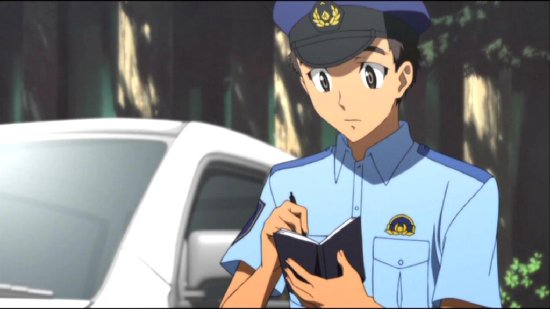
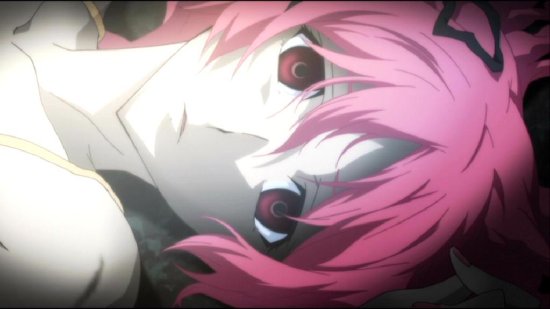
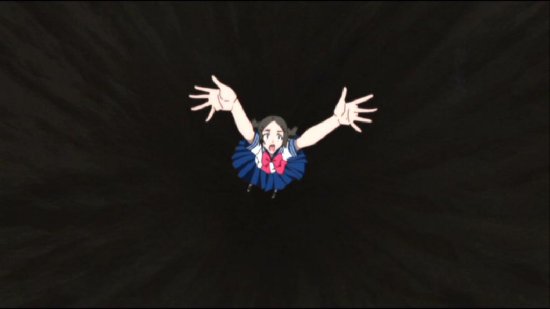
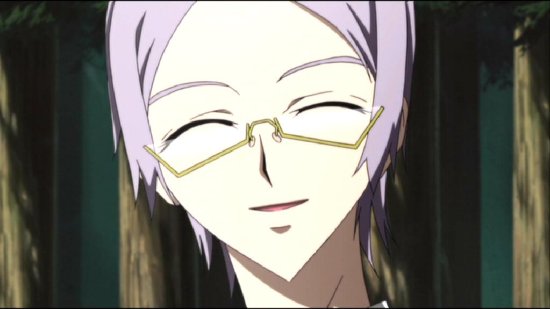
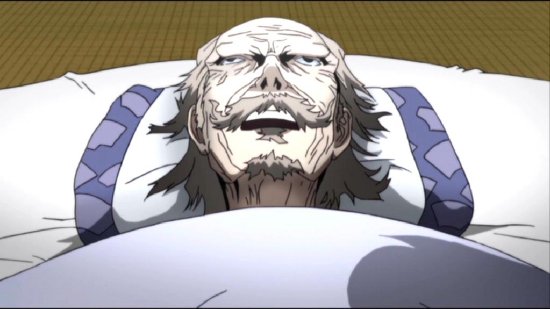
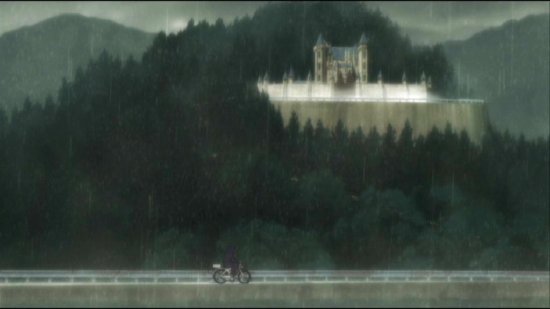
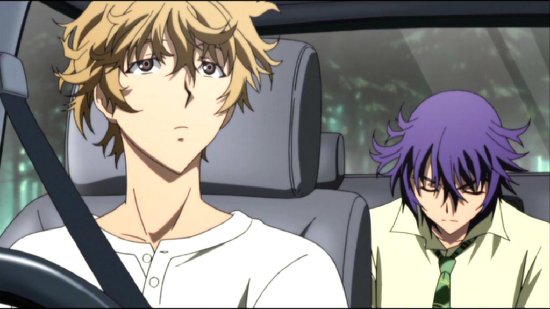
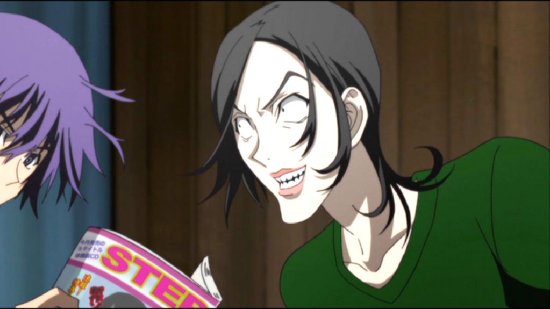


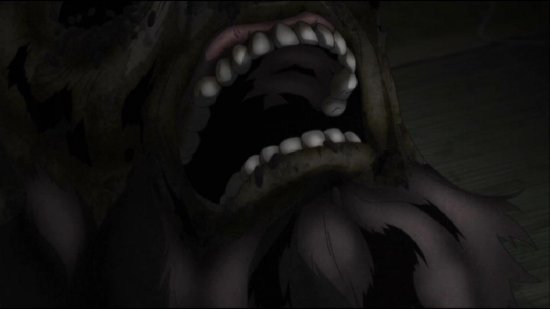
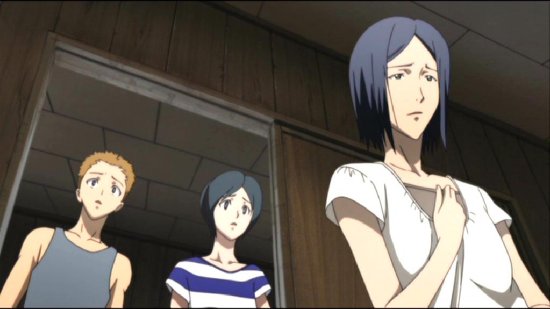
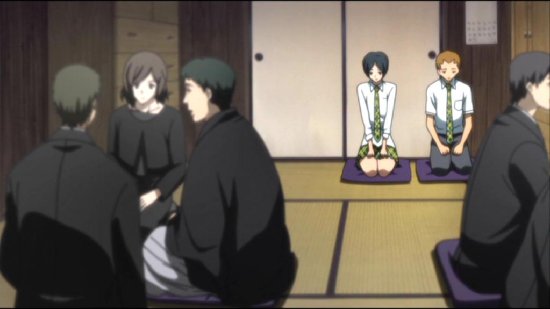

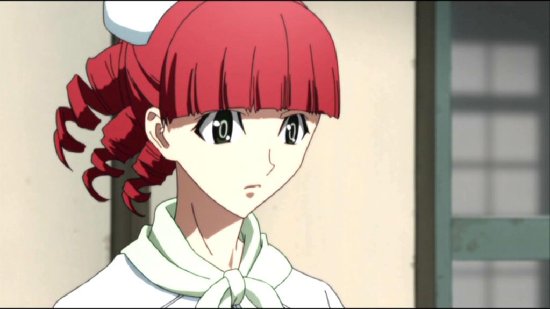

Your Opinions and Comments
Be the first to post a comment!